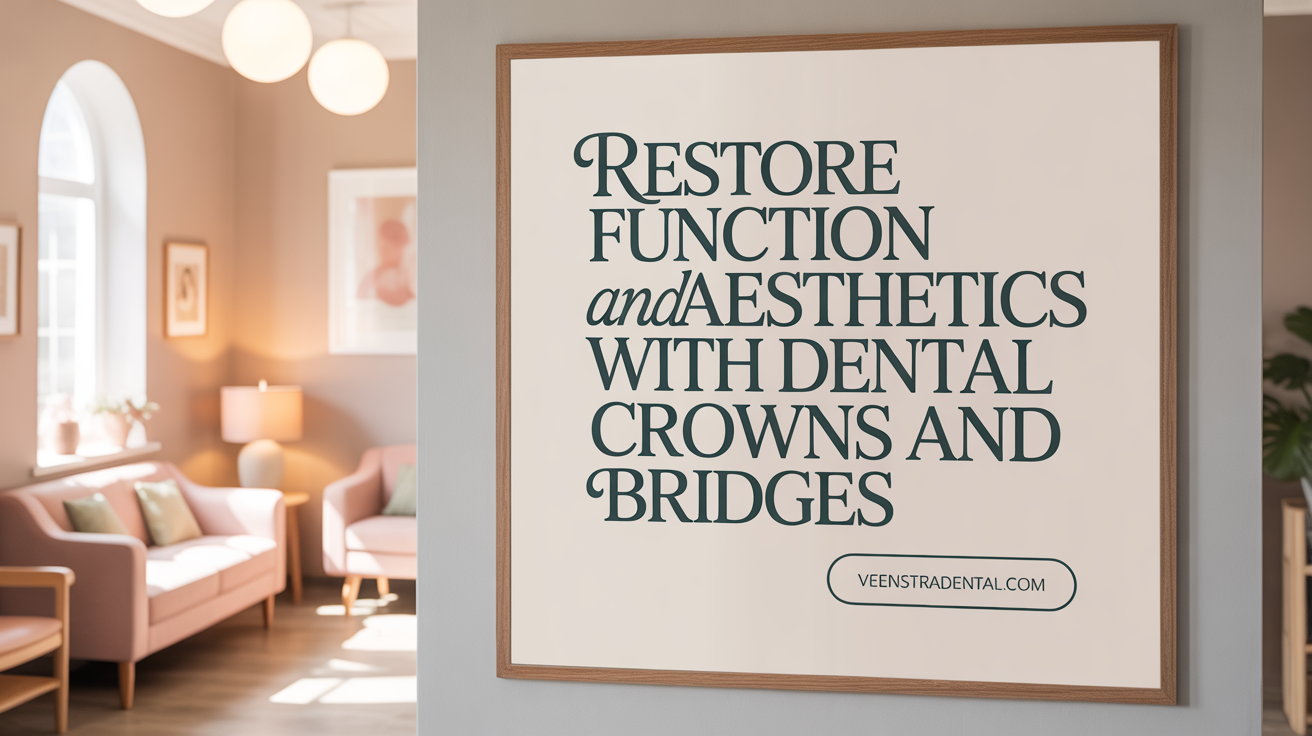Introduction to Restorative Dentistry
Restorative dentistry is a specialized branch of dentistry focused on repairing and replacing damaged or missing teeth to restore oral health, function, and appearance. Utilizing a variety of treatments—from simple fillings to complex full-mouth reconstructions—this field aims to improve chewing, speaking, and the overall well-being of patients. This article delves into the scope of restorative dental treatments, highlighting common procedures such as crowns, bridges, implants, dentures, and more, while explaining their purposes, benefits, and considerations for individual patient needs.
Types of Restorative Dental Procedures and Their Purposes
What types of restoration are commonly used in restorative dentistry?
Restorative dentistry offers a variety of procedures designed to repair or replace damaged and missing teeth. These treatments help restore proper function, improve aesthetics, and prevent further oral health issues.
Common restorative options include dental fillings, crowns, bridges, implants, dentures, and inlays or onlays.
Dental fillings are used for repairing minor decay or cavities with composite resins, amalgam, or glass ionomer materials. Crowns are caps placed over damaged or weakened teeth to restore shape, strength, and function. Bridges replace one or more missing teeth by anchoring artificial teeth to natural teeth or implants, helping maintain proper alignment.
Dental implants involve surgically inserting titanium posts into the jawbone, which act as artificial roots to support crowns, bridges, or dentures. They are a long-lasting solution supporting natural aesthetics and function.
Other options include inlays and onlays for moderate damage that cannot be restored with a simple filling, veneers for cosmetic enhancement, and full or partial dentures to replace multiple missing teeth. These restorative procedures work together to rebuild and preserve the integrity of an individual's oral health.
What are the distinct functions of fillings, crowns, bridges, implants, dentures, and inlays/onlays?
| Restorative Method | Main Function | Typical Use Cases | Materials & Longevity |
|---|---|---|---|
| Fillings | Repair cavities and minor decay | Small cavities, minor decay | Composite, amalgam; last about 10 years |
| Crowns | Protect and restore damaged teeth | Severely decayed, fractured, or after root canal | Porcelain, zirconia; last 10-15 years |
| Bridges | Replace missing teeth by anchoring to neighboring teeth | One or multiple missing teeth | Porcelain fused to metal, ceramic; last 5-15 years |
| Dental Implants | Mimic natural tooth roots, support restorations | Missing teeth with sufficient bone | Titanium; potential lifetime durability |
| Dentures | Replace multiple or all missing teeth | Extensive tooth loss; removable option | Acrylic, metal; last around 10 years |
| Inlays/Onlays | Repair moderate damage or decay | Larger cavities not suitable for fillings | Porcelain, gold; lasting 10-20 years |
These options are chosen based on the extent of damage, number of missing teeth, patient preferences, and overall oral health. Proper maintenance and regular dental visits are essential for ensuring their longevity.
Procedures, Techniques, and Materials in Restorative Dentistry
 Restorative dental treatments encompass a broad range of procedures designed to repair and replace damaged or missing teeth, aiming to restore both function and appearance. Common approaches include placing dental fillings for minor decay, fitting crowns to strengthen weakened teeth, creating bridges to replace gaps, and inserting dental implants to support prosthetic teeth.
Restorative dental treatments encompass a broad range of procedures designed to repair and replace damaged or missing teeth, aiming to restore both function and appearance. Common approaches include placing dental fillings for minor decay, fitting crowns to strengthen weakened teeth, creating bridges to replace gaps, and inserting dental implants to support prosthetic teeth.
The process of achieving effective restorations often involves specific techniques. For instance, adhesive bonding allows precise attachment of restorations like veneers and inlays, reducing the need for extensive tooth alteration. Digital impressions and CAD/CAM (Computer-Aided Design and Computer-Aided Manufacturing) technology have revolutionized restoration design and fabrication, offering highly accurate, customized results in fewer visits.
Materials play a crucial role in modern restorative dentistry. Porcelain and zirconia are popular for their natural appearance and durability, especially in crowns and veneers. Metal alloys, including gold and other noble metals, are valued for their strength and longevity, particularly for posterior restorations. Resin composites are favored for their aesthetic qualities, often used in fillings and anterior restorations.
With ongoing advancements, biomimetic materials that imitate the properties of natural teeth are increasingly used to create more durable, less invasive restorations. Innovations like nanotechnology improve strength and wear resistance, while 3D printing enables the quick production of precise, custom restorations. These developments contribute to longer-lasting, more natural-looking outcomes.
Emerging trends in restorative dentistry include the use of laser technology for minimally invasive procedures and the integration of AI-driven diagnostic tools to enhance treatment planning. The focus is on preserving as much healthy tooth structure as possible and selecting eco-friendly, biocompatible materials that promote long-term oral health.
In summary, modern restorative dentistry combines traditional procedures with cutting-edge techniques and materials, resulting in restorations that are more durable, aesthetically pleasing, and tailored to individual patient needs.
Dental Crowns and Bridges: Functionality and Benefits

What crowns and bridges are and when they are used
Dental crowns are custom-made caps designed to fit over damaged or decayed teeth, restoring their shape, strength, and appearance. They are commonly used after root canal treatments, to protect cracked or heavily filled teeth, or to support dental restorations like bridges or implants.
Dental bridges, on the other hand, are prosthetic devices that fill the gaps left by missing teeth. They consist of artificial teeth (pontics) anchored to neighboring natural teeth or implants. Bridges are ideal for restoring chewing ability, preventing teeth from shifting, and maintaining facial structure.
Both crowns and bridges are made from durable, natural-looking materials such as porcelain, ceramic, or metal, providing long-lasting solutions that blend seamlessly with existing teeth.
Processes of preparing and fitting crowns and bridges
Getting a crown usually involves two visits:
- First, the dentist reshapes the affected tooth by removing a thin layer of enamel.
- Impressions are taken and sent to a lab to craft the custom crown.
- A temporary crown is placed until the permanent one is ready.
- During the second visit, the permanent crown is cemented securely.
For bridges, the process includes:
- Preparing the adjacent teeth by reshaping them to support the bridge.
- Taking impressions for the fabrication of the bridge.
- Fitting a temporary bridge until the final one is made.
- Final placement involves cementing the bridge onto the prepared teeth.
Benefits like restoring chewing function, aesthetics, and bite alignment
Restorative dentistry enhances overall oral function by enabling normal chewing and speaking. Crowns restore the biting surface and protect weak teeth, preventing further damage. Bridges effectively reestablish the ability to chew properly and improve speech. Both restorations improve aesthetic appearance, creating a natural and harmonious smile. They help maintain proper bite alignment, preventing teeth from shifting and reducing wear of opposing teeth.
Longevity, maintenance, and materials choices
With proper care, crowns and bridges can last from 10 to 15 years or longer. Regular brushing, flossing, and routine dental visits are essential for longevity. Materials used include porcelain for aesthetics, metal for durability, or a combination like porcelain-fused-to-metal. Choosing the right material depends on the location of the restoration, functional needs, and aesthetic preferences. Proper maintenance and early attention to any issues can ensure these restorations serve effectively for many years.
Dental Implants and Dentures: Replacing Missing Teeth

What does restorative dental treatment cover?
Restorative dental treatment encompasses a variety of procedures aimed at repairing, replacing, and restoring damaged or missing teeth. Its main goal is to improve both oral health and function.
Common treatments include dental fillings, crowns, bridges, implants, dentures, inlays, and onlays. Each procedure is designed to address specific issues such as cavities, tooth decay, fractures, or tooth loss.
These treatments help eliminate pain, restore chewing ability, and prevent further dental problems like gum disease or bone loss. Restorative dentistry also strives to preserve natural teeth whenever feasible and often uses durable, biocompatible materials.
Overall, it helps patients achieve a healthy, functional, and aesthetically pleasing smile, boosting confidence and oral health.
Implant technology and osseointegration
Dental implants are advanced devices that replace missing tooth roots using small titanium posts surgically inserted into the jawbone.
A crucial aspect of implant success is osseointegration, where the bone naturally fuses with the implant surface, providing a sturdy foundation for crowns or other restorations.
This process typically takes several months but results in a stable, long-lasting anchor that mimics natural tooth roots.
Types of dentures: partial, full, implant-supported
Denture options vary based on individual needs:
| Type | Description | Support Method | Typical Use | Longevity |
|---|---|---|---|---|
| Partial | Removable appliance replacing few missing teeth | Existing natural teeth | When some natural teeth remain | 5-10 years |
| Full | Complete set replacing entire arch | Gum tissue and underlying bone | When all teeth are missing in one arch | 5-8 years |
| Implant-supported | Dentures attached to dental implants | Implants in jaw | Improved stability for full or partial edentulism | 10+ years |
Implant-supported dentures offer greater stability and comfort, resembling natural teeth more closely.
Functional and aesthetic benefits
Both implants and dentures restore essential functions such as chewing, speaking, and biting.
Improvements in appearance include a more natural smile and facial structure support, especially with implants that prevent bone deterioration.
Implants provide a permanent solution, helping maintain facial volume and preventing the sunken look often associated with missing teeth.
Comparison of implants versus dentures
| Aspect | Dental Implants | Dentures |
|---|---|---|
| Support | Fixed, fused with jawbone | Removable |
| Stability | Very stable, similar to natural teeth | Can shift or slip |
| Comfort | Usually more comfortable long-term | May cause sore spots |
| Maintenance | Care similar to natural teeth | Requires removal and cleaning |
| Longevity | 15+ years, often lifetime | 5-10 years |
| Effect on Bone | Prevents bone loss | May accelerate bone loss over time |
Implants generally offer greater comfort, stability, and preservation of jawbone health, but they tend to be more expensive.
Longevity and care recommendations
With proper care, dental implants can last a lifetime, and dentures can last 5-15 years. Good oral hygiene, regular dental check-ups, and avoiding hard or sticky foods help prolong the lifespan of these restorations.
Patients should maintain routine cleaning, avoid tobacco, and report any discomfort or issues to their dentist promptly.
For detailed comparison and benefits, consulting with a dental professional can help determine the best option based on individual needs and budgets.
Choosing the Right Restorative Treatment: Patient Considerations
 When deciding on restorative dental procedures, several factors influence the most suitable option for each individual. The extent of damage or decay in the teeth, including whether it’s minor or extensive, helps determine if treatments like fillings, crowns, or more complex options such as implants are appropriate.
When deciding on restorative dental procedures, several factors influence the most suitable option for each individual. The extent of damage or decay in the teeth, including whether it’s minor or extensive, helps determine if treatments like fillings, crowns, or more complex options such as implants are appropriate.
Another important consideration is the number of teeth affected. While a single damaged tooth might be best treated with a crown or filling, multiple missing teeth could require bridges, dentures, or implant-supported restorations. Patients’ aesthetic goals, such as desiring a natural look or specific color matching, also influence treatment choices.
Cost considerations, including patient budgets and what their insurance covers, play a critical role. Restorative procedures vary widely in price—from simple fillings costing a few hundred dollars to implants that may reach several thousand. An informed discussion with the dentist about costs and maintenance helps plan a feasible, long-lasting solution.
The importance of personalized treatment planning cannot be overstated. It involves comprehensive evaluations—clinical exams, X-rays, and impressions—to understand the specific condition of the teeth and jawbone. This evaluation ensures the chosen procedure addresses immediate concerns while supporting long-term oral wellness.
Balancing functionality, aesthetics, and durability is essential. It means selecting treatments that restore proper biting and chewing, align with the patient’s lifestyle, and provide a natural appearance. For example, while gold crowns might be highly durable, porcelain offers better aesthetics for front teeth.
In summary, choosing the appropriate restorative option entails assessing the damage level, personal preferences, financial aspects, and long-term maintenance. Consulting with a skilled restorative dentist ensures that the treatment plan fits the patient's unique needs, providing functional, aesthetic, and enduring results.
Maintenance, Longevity, and Cost Aspects of Restorative Dentistry

How is the maintenance and longevity of different restorative dental restorations managed?
Maintaining the durability of dental restorations like crowns, bridges, implants, and dentures requires diligent oral hygiene, including regular brushing, flossing, and professional cleanings. Consistent check-ups enable dentists to detect early signs of wear, secondary decay, or surface damage. Material selection plays a role in longevity; for example, porcelain crowns and zirconia restorations tend to last longer than composite options, especially when paired with proper occlusal adjustment. Preventive measures such as occlusal guards can prevent excessive force on restorations caused by habits like teeth grinding.
Monitoring and timely intervention are crucial. Dentists may perform polishing or minor repairs to extend the lifespan of restorations. Managing habits that may damage restorations, such as nail biting or using teeth as tools, also helps. Ultimately, a team effort involving good patient practices, routine dental visits, and careful treatment planning helps ensure restorations remain functional and aesthetic over many years.
What are some cost considerations and factors influencing the selection of restorative dental treatments?
Costs for restorative procedures vary widely based on the extent of damage, the complexity of the treatment, selected materials, and geographic location. For example, simple fillings might cost between $100 and $500 per tooth, while crowns can range from $800 to $3,000 each. Implants are usually around $2,500 per implant, with total costs increasing depending on additional procedures such as bone grafts or sinus lifts.
Patients should consider the long-term value of their chosen options. High-quality materials like porcelain or zirconia provide better aesthetics and durability but at a higher initial expense. Insurance coverage varies; some plans partially cover crowns, bridges, or implants if deemed necessary for function and health.
When planning treatment, patients need to weigh immediate costs against the benefits of longevity, jaw health preservation, and improved function. Financing options, like dental payment plans or credit programs, can help manage expenses. Making an informed choice involves balancing affordability with expectations for durability and oral health benefits.
Conclusion: Embracing Restorative Dentistry for Holistic Oral Health
Restorative dentistry offers a comprehensive array of treatments designed to repair, replace, and rejuvenate damaged or missing teeth, thereby improving oral health, function, and aesthetic appeal. From dental fillings and crowns to bridges, implants, and dentures, these procedures cater to diverse needs and complexities. By understanding the purposes, techniques, benefits, and maintenance of each restorative option, individuals can make informed choices in collaboration with their dental professionals. Investing in restorative care promotes not only durable tooth health but also enhanced confidence and quality of life. Ultimately, embracing restorative dentistry paves the way for a healthy, beautiful smile and lifelong oral wellness.
References
- Restorative Dentistry: What It Is, Types & Procedures
- Restorative Dentistry — Crowns — Bridges — Dental Implants
- Restorative Dentistry Solutions: Dental Crowns, Bridges, and ...
- Restorative Dentistry: Transforming Smiles with Precision and Care
- Damaged Teeth? Repair Them With Dental Crowns and Bridges
- Restorative Dentistry: Treatments, Costs & Benefits
- Restorative Dentistry — Holly Phillip DDS | Austin Dentist Near ...
- Repairing Dental Problems: Exploring the Benefits of Restorative ...
